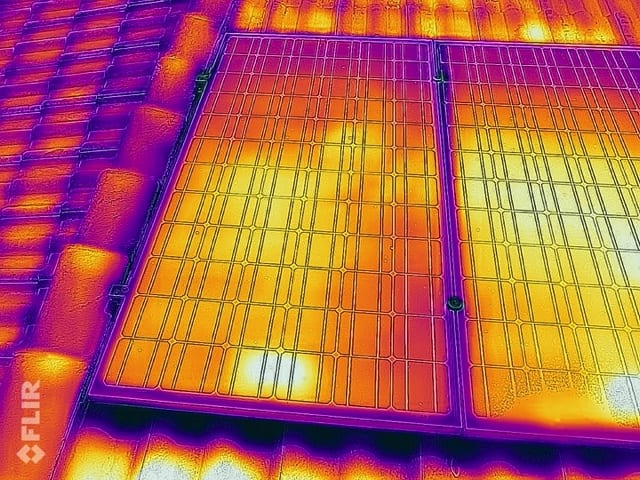Hot spots are areas of the panel which are hotter than the rest of the panel. This is, in a word, bad, because it can cause panel failures.
Why does an area get hot?
Solar panels generate energy. This energy, in the form of electricity, flows through each cell in a panel and out to your home. However, if the flow of electricity is blocked – by a non-performing cell – the excess electricity must go somewhere. In this case, the energy is dissipated as heat.
Using the analogy of a water pipe, if one section is constricted, the narrow segment will experience higher pressure – and higher pressure is the same as higher temperature!
For more information on how solar panels work on an atomic level, check out my p-n junction article.
What causes non-performing cells?
One reason is buying a cheap panel and getting it installed by budget installers. A host of physical factors – bad soldering from the factory, damage during installation, micro-fractures in the cell during production – can lead to cells that block the flow of electricity. As with anything, budget options with reduced quality assurance and care can lead to premature failure.
The other common reason is shading. Because of how a solar panel works, shading a cell causes it to block the flow of electricity. And as mentioned above, blocking can cause hot spots. I’ve done a whole article on shading, which goes into more detail – and how technologies exist to minimise the hot spots caused by shading.
How can I avoid hot spots?
Now you know the causes, it’s much easier to avoid! High-end manufactures scan all their cells to minimise the chance of defects, and good installers will be conscious of potential shading – using optimisers if necessary – and handle panels with care. So, if you get a bill-buster system, don’t be surprised if hot spots happen. Instead, buy a system from a company that uses quality products and takes the utmost care when designing and installing systems.
Image source: https://de.wikipedia.org/wiki/Datei:Photovoltaik.jpg











